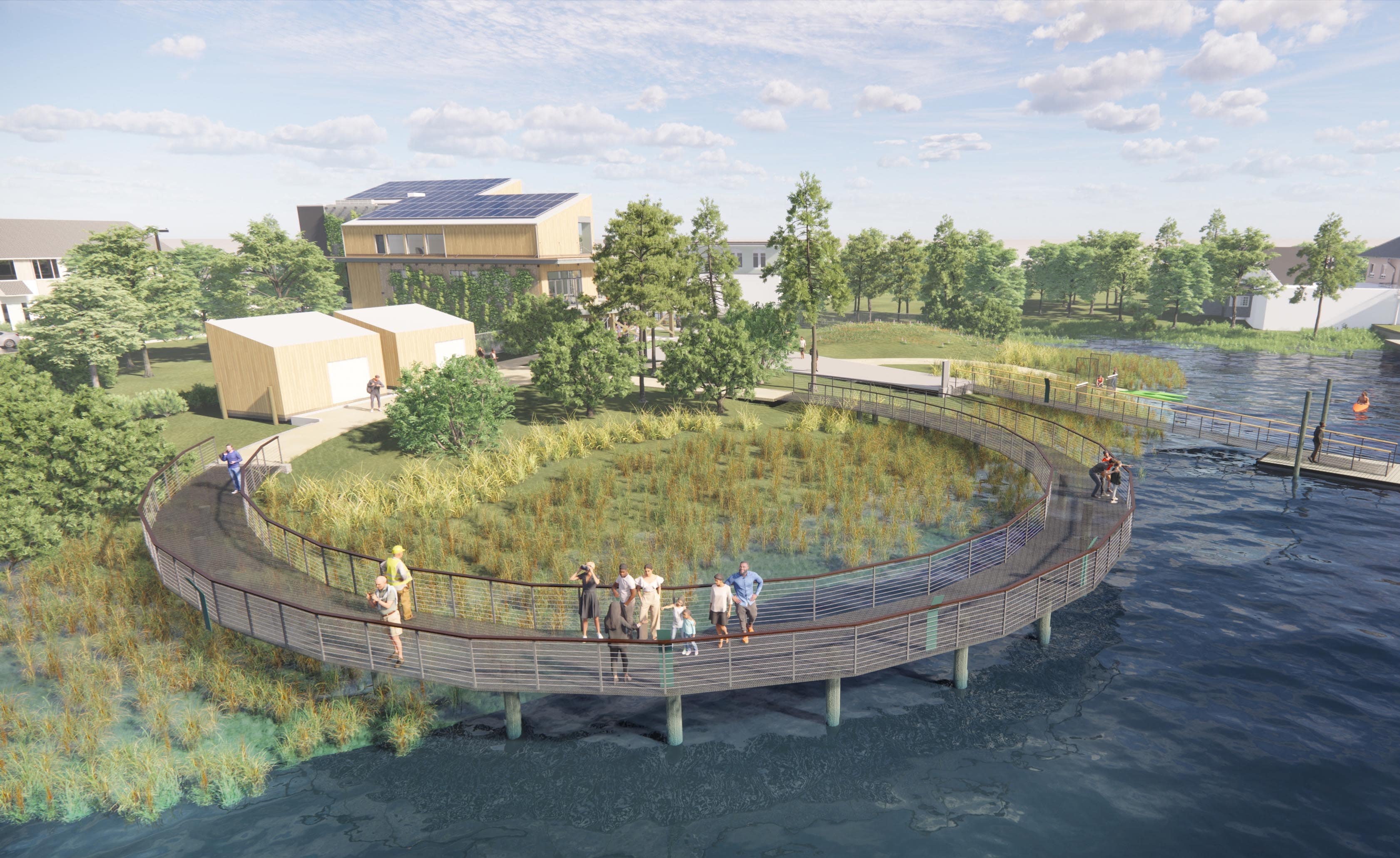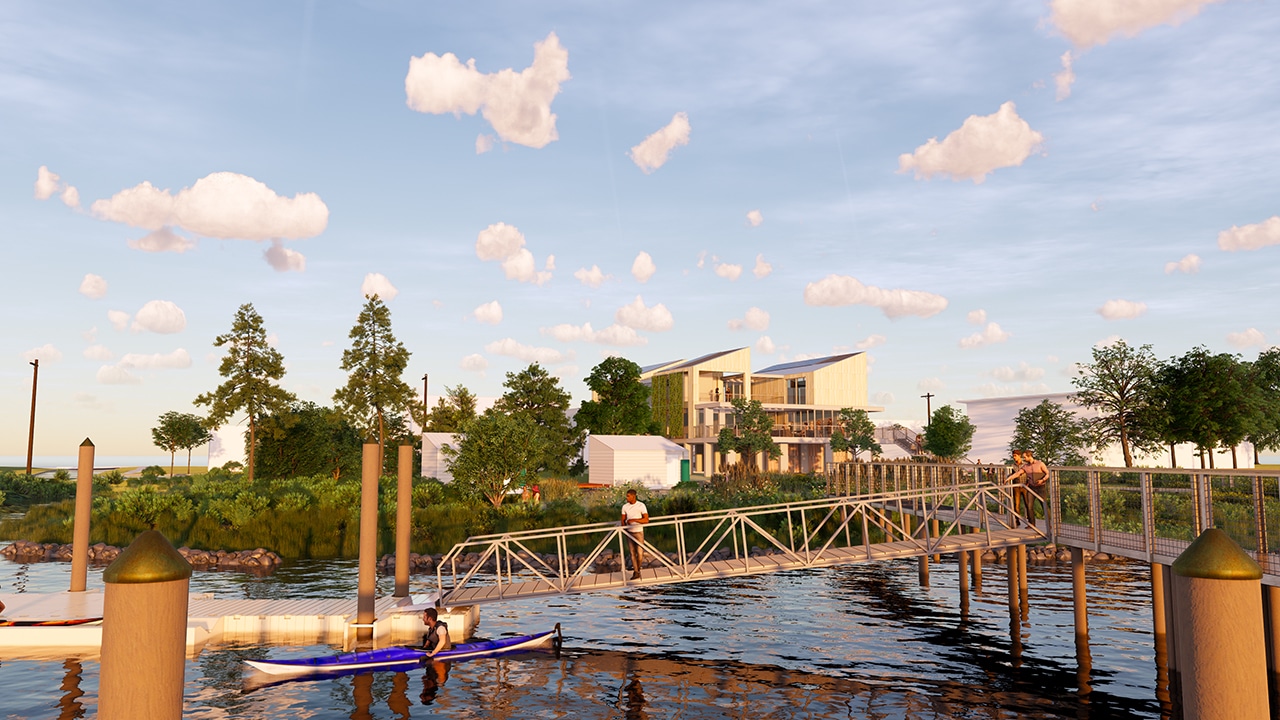As coastal cities grapple with increasing pressures from rising waters, a new project of Hourigan’s offers an answer that is both defiant and prescient.
The Elizabeth River Project’s (ERP) Ryan Resilience Lab will reside on a flood plain in Norfolk, VA. The area is destined to be submerged in the coming decades as sea levels rise and storms intensify, but building strategies are in place to stand longer in harm’s way.
Eventually the structure will surrender to the inevitable.
“It’s intended to show you how to work and play and live with this rising sea level,” said Marjorie Mayfield Jackson, who co-founded the Elizabeth River Project 25 years ago. “And once it’s no longer functioning, we take down the building and give it back to nature, give it back to the river.”
A large part of the site is the public “learning park” and a raised circular boardwalk that is made of a sheer mesh. This will allow visitors to see through the boardwalk to a restored shoreline below. The shoreline will include oyster reefs, wetlands, and native plants, all meant to help lessen the impacts of erosion and flooding. While the building itself will house features for collaboration, the exterior of the building will create an inviting third space that will elevate the mind, allow for deep evaluation, and engage the surrounding community from the roadway to the waterway. Given that ERP’s Ryan Resilience Lab is being built in a coastal environment, construction plans and materials being used require additional consideration to withstand the surrounding conditions.

Evaluating Materials and Systems
Upon reviewing the constructability of the land, the construction manager (CM) should evaluate marine-grade construction materials
FOUNDATIONS / STRUCTURE
EXTERIOR SKIN
MECHANICAL SYSTEMS
Due to the climate and conditions of coastal environments, it is important to understand and work with design and mechanical partners to best understand the needs and functions of each system within the building. The CM should feel empowered to make recommendations and changes to ensure proper humidity and moisture control are being met to combat conditions like spray and condensation. Partnering with the proper mechanical team will provide the client with the proper knowledge to prevent any future issues.

CONSTRUCTION OF A LIVING SHORELINE
Although there are a variety of solutions available to combat sea level rise, CMs with local knowledge and expertise can best support erosion mitigation by creating a living shoreline. The CM should not only have experience in constructing these beautiful and practical environments, but also be adept at assisting with the design, permitting, and selection of materials to establish the most creative and innovative system.
A key to success in constructing these shorelines is a collaborative and concerted team effort during the early planning and analysis phases of the existing site conditions, permitting and legal approvals, site preparation, and sequencing of activities. The complexities of permitting and building these delicate shorelines require support from the CM along with local and state agencies, specialized trade partners, and supplier relationships.
Bringing in specialty trade partners, consultants, and suppliers to assist with the wetland process early on will ensure the project is evaluated from all angles, keeping the mission in mind along with maintaining the project schedule and budget. A key success component for ERP’s Ryan Resilience Lab has been the sequence of construction activities, ensuring the planting materials were installed during the best weather and season and coordinating with both local and state agencies throughout the entire process.
The Future is Resilient
ERP’s mission is to restore the Elizabeth River to its highest practical level of environmental quality. Demonstrating approachable solutions while also considering coastal resilience and sustainable options, will prolong the life of the structure . Implementing a living shoreline will ease the effects of sea level rise that will benefit the natural environment and the building. Relying on the power of partnerships to accomplish the restoration goals to keep the structure standing as long as possible is a top priority. The future is ERP’s Ryan Resilience Lab, its building model, and the sustainable efforts constructing it.
Previous Post Next Post